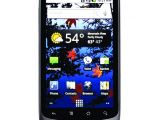The second week of 2010 is about to end, and there have been a lot going on during the past seven days, following the just-ended International 2010 Consumer Electronics Show in Las Vegas and preparing us for the remaining of the year. The same as last week, Google's Android 2.1 was a star in this week's headlines, yet a wide range of reports on other operating systems on the market emerged too. The hottest topics of the week were related to various software updates that were leaked or officially unveiled for some of the existing devices on the market, but we also spotted new phones, and details on what carriers and mobile-phone makers planned on delivering to users in the near future.
Last week, Google unveiled officially the Android 2.1 operating system that powered the Nexus One by HTC, and the entire blogosphere was interested in when the platform would become available for existing handsets too. This week, we learned that the platform was available for download via the Android SDK, that the Motorola MILESTONE should taste it pretty soon, that T-Mobile myTouch 3G should receive it in spring, and that Samsung Galaxy Spica was getting ready for Android 2.0, and probably for 2.1 soon after.
Taiwanese mobile-phone maker HTC aims at releasing the Android 2.1 update for its HTC Hero in February, after updating its HTC Sync software for the Hero, Magic and Tattoo. However, HTC has been hard at work this week on the software updates area, and we've seen the company releasing a new SMS Function update for HD2, as well as an SMS-message hotfix for the Touch Pro and Touch Diamond on Sprint, and another one for the carrier's Touch Pro2. Sprint's Touch Pro2 was officially announced to receive a WM 6.5 update, and T-Mobile already outed the same update for its Dash 3G and Touch Pro2, after announcing initially that the solution would come on January 20.
Still on the HTC and Android side, we have the Nexus One phone, which has 3G connectivity issues. The problems have been acknowledged by Google and T-Mobile, and the carrier already made the first steps into the matter. In addition, we learned that the phone's hardware components cost $174.15, that Google managed to sell only 20,000 units in the first week of availability of the handset, and that Vodafone Germany was expected to have the Nexus One available priced at €149.90 in the following weeks. Google has announced that existing T-Mobile customers can upgrade to Nexus One while paying only $279 for the device (down from $379), most probably as a result of the weak sales, and one official from the company also pointed towards a possible QWERTY-enabled enterprise version of the handset.
Another highly popular Android phone on the market, Motorola DROID, which includes hardware and manufacturing costs of $187.75, was unveiled to come with security breaches in that Android 2.0.1 OS flavor it ran under, yet a temporary solution for the issue was already discovered. The number of security solutions on mobile phones is expected to grow significantly in the following few years, and one should agree that this area needs significant improvements, especially since the 3G encryption has been cracked. When it comes to Motorola, we should also mention the Android-based Ruth handset spotted recently, as well as the multi-touch features that the company aims at including in almost all of its future devices.
Finnish mobile-phone maker Nokia is another company that delivered a significant number of updates to its users during this week. The most important of them all might be the firmware version 40.0.005 for Nokia 5800, followed by a series of two new software solutions for the Nokia N900. The company released a minor firmware for the device so as to offer N900 owners access to the Nokia Ovi Store, which now includes applications for Maemo too, and then came up with a major software release for the phone, after releasing new firmware solutions for the Nokia N86 and E72 handsets. Nokia N900 users can also download the RC2 flavor of Firefox Mobile browser for their devices, while those who own an S60 5th Edition device have a new Gig Finder app available. Moreover, the handset vendor has released a new flavor of Nokia Software Updater, with support for Windows 7.
In the Windows Mobile area, we've seen WM 6.5.3 showing up in two videos, loaded on a leaked Sony Ericsson Faith and present on the Sony Ericsson Xperia X2 at CES, and we also learned that HTC provided another confirmation regarding that long-rumored WM 7 update for HD2, a device now available at Virgin Mobile in the UK too. However, Microsoft is still said to have delayed the next-generation Windows Mobile 7 to 2011, and to plan launching WM 6.6 at the upcoming MWC event in Fabruary. Until more details emerge, we should say that users of Microsoft's mobile platform can now enjoy the NetFront Browser v4.0, with faster speeds and a better overall performance, according to its developers. Samsung Omnia II at Verizon also tasted a new software solution.
Other news that might be of interest include a Palm webOS 1.4 said to arrive in February, after webOS 1.3.5.2 landed in Europe with Bluetooth tethering, the launch of Motorola Brute i680 at Sprint, the emergence of BlackBerry 8910, a rumor that Tour2 should arrive at Sprint and Verizon soon, an offer that Rogers put in place for its HTC Dream users, which includes a free upgrade to Magic, or some details on what the upcoming iPhone 4G might include when compared with existing superphones. There are also the rumor that T-Mobile will launch 8 HTC phones this year, as well as new price plans US carriers MetroPCS, Verizon and AT&T put in place for their users, new Shark phones from Samsung a series of details on what the Symbian^4 UI might include, and rumors on a March 7 launch date for Motorola BACKFLIP, which emerged in its first promo video this week.

 14 DAY TRIAL //
14 DAY TRIAL // 

